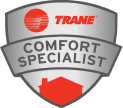In recent years, the heating, ventilation, and air conditioning (HVAC) industry has seen a significant transformation, driven by technological advancements and a growing awareness of environmental issues. Among the pivotal innovations, high-efficiency furnaces have become a focal point for homeowners and industry stakeholders.

This article delves into the multifaceted benefits of upgrading to a high-efficiency furnace. From cost savings to environmental impact, the advantages are substantial and backed by credible data.
Financial Savings Through Improved Efficiency
One of the key advantages of high-efficiency furnaces is the possibility of substantial financial savings. These systems are designed to convert fuel into heat more efficiently, which could translate into reduced utility expenses. As per the data released by the U.S. Department of Energy, furnaces with an Annual Fuel Utilization Efficiency (AFUE) rating between 90% to 98.5% offer tremendous savings in energy costs compared to traditional models.
Further Advantages of High-Efficiency Furnaces
Beyond financial savings, high-efficiency furnaces offer other numerous benefits, such as:
- Longevity: High-efficiency furnaces tend to outlast traditional models due to their advanced design and construction.
- Consistency: They provide more consistent heating throughout your home, reducing cold spots.
- Quiet operation: They produce less noise than traditional counterparts due to advanced technology.
- Ease of installation: Many high-efficiency models are easier to install, reducing labor costs.
Table: Comparison of AFUE Ratings and Estimated Cost Savings
| AFUE Rating | Annual Fuel Cost (Estimated) | Potential Savings [%] |
| 78% (Traditional) | $1,500 | 0% |
| 90% | $1,300 | 13% |
| 98.5% | $1,100 | 26.7% |
Environmental Impact: Reducing Carbon Footprint
High-efficiency furnaces consume less fuel while generating the same level of heat, resulting in less greenhouse gas emissions. This makes them an environmentally-friendly solution for reducing one’s carbon footprint. The Environmental Protection Agency (EPA) actively promotes the use of high-efficiency HVAC systems as part of its effort to tackle climate change.
Addition Energy Savings
Apart from reducing CO2 emissions, high-efficiency furnaces also reduce energy use significantly, leading to substantial costs savings over the lifespan of the system. Calling attention to the financial benefits, as well as the environmental impact, fosters a greater incentive for homeowners to switch to high-efficiency systems.
Greenhouse Gas Emissions Reduction with High Efficiency Furnaces
The table below expresses the comparative CO2 emissions between traditional and high-efficiency furnaces:
| Furnace Type | CO2 Emissions (Average) |
| Traditional Furnace | 2,200 kg/year |
| High-Efficiency Furnace | 1,650 kg/year |
This represents an emission reduction of 550 kg per year, or 25%, for a high-efficiency model compared to a traditional one, further underlining the benefits of making the switch.
Additional Benefits of High-Efficiency Furnaces
- Better air flow: High-efficiency systems are designed with advanced variable-speed blower or two-stage gas burners that provide better air flow and spread heat more evenly in the house.
- Quieter operation: Because they have newer technologies like sound-absorbing material, high-efficiency furnaces run quieter than traditional models.
- More precise temperature control: High-efficiency systems use variable-speed motors, which let you control the temperature in your home more accurately.
- Environmentally friendly: with reduced CO2 emissions, high-efficiency furnaces contribute to a more beneficial environment for future generations.
Enhanced Home Comfort and Consistency
Technological advancements have led to the development of modern heating systems boasting features like variable-speed blowers and modulating gas valves. These additions not only regulate and distribute heat more evenly throughout the home, but they also maintain a consistent temperature. The result is an improved indoor comfort level without major temperature fluctuations.
A study conducted by the National Institute of Standards and Technology (NIST) revealed that maintaining a consistent indoor temperature increases comfort level and productivity. Here are key highlights from the study:
- Uneven temperature distribution can significantly negatively impact the comfort level in homes.
- A temperature fluctuation of even 1 degree can cause discomfort.
- Variable speed blowers provide consistent temperature, enhancing comfort and energy efficiency.
Incentives and Rebates
To promote sustainable living, many local and federal authorities offer incentives, rebates, or tax credits associated with upgrading to high-efficiency furnaces. Such initiatives aim to make it more affordable for consumers to adopt energy-efficient practices.
Here are few examples of such programs:
- The U.S. Department of Energy’s Federal Energy Management Program – offers rebates on high-efficiency heating appliances.
- The Energy Star Program – provides tax credits to homeowners who install qualifying high-efficiency furnaces.
Increased Property Value
Switching to a high-efficiency furnace not only leads to lower energy costs and a reduced environmental footprint, but it can also significantly enhance the resale value of a property. Prospective buyers often appreciate the long-term cost savings and the green-conscious approach to home management, making such homes more appealing.
According to a study by the National Association of Realtors (NAR), energy-efficient homes have the potential to sell at a price up to 9% higher than similar, less energy-efficient properties.
Comparison of Standard and High Efficiency Furnaces
| Standard Furnace | High Efficiency Furnace | |
| Energy Efficiency | 80-85% | 90-97% |
| Cost | Lower upfront cost | Higher upfront cost but lower utility bills over time |
| Environmental Impact | Higher Co2 emissions | Lower CO2 emissions |
| Resale Value | May not affect resale value | May increase resale value |
Technological Advancements in HVAC Systems
Modern high-efficiency furnaces incorporate smart technology that allows for remote control and monitoring via mobile devices. Smart furnaces use sensors and powerful analytical tools that analyze temperature rates, fuel use rates, and airflow efficiencies. These allow homeowners to monitor their furnace’s operations and make necessary adjustments.
These technological advancements in HVAC systems have greatly enhanced their performance and efficiency. Key advancements include:
- Internet of Things (IoT): This tech principle enables remote control and predictive maintenance of HVAC systems, helping to prevent costly breakdowns and delivering significant energy savings.
- Smart Thermostats: Advanced thermostats provide system diagnostics, usage statistics, and remote control ability. They help to optimize the system performance and also ensure energy saving.
- Eco-friendly Coolants: New HVAC systems use eco-friendly coolants that have less global warming potential compared to traditional refrigerants.
- Variable Speed Motors: These provide accurate and efficient temperature control and increase system life by reducing strain on the HVAC system’s components.
Reliability and Durability
High-efficiency furnaces are superior in durability. Thanks to advanced technology and high-quality materials, these furnaces can withstand rough usage and require fewer repairs. This significantly reduces maintenance costs and lengthens the system’s lifespan.
According to Consumer Reports, these models have a 20% less chance of breaking down when compared to older models. The durability of high-efficiency furnaces provides homeowners with peace of mind and confidence in their investment.
Installation Considerations: Challenges and Opportunities
While the upfront costs of high-efficiency furnaces can pose a barrier, the long-term cost-saving benefits can compensate for the initial investment. Various incentives, such as tax credits and utility rebates, are often available for these kinds of energy-efficient systems, further offsetting the initial expenses.
Professional installation is recommended to ensure maximum system efficiency and compliance with local building codes. Be sure to hire an experienced, certified technician who can accurately calculate the appropriate size for your HVAC system, a critical aspect that impacts overall performance and energy consumption.
| Pros of High-Efficiency Furnaces | Cons of High-Efficiency Furnaces |
| Lower monthly utility bills | Higher upfront cost |
| Better : for the environment | May require significant alterations to existing ductwork or vents |
| Increased home value | Expense of professional installation |
When making decisions on heating system upgrades or replacements, it’s important to consider these factors to maximize your investment and benefit from the technological advancements in HVAC systems.
Conclusion
Upgrading to a high-efficiency furnace offers a multitude of benefits, from cost savings and environmental impact to enhanced home comfort and property value. As technology continues to advance, these systems will play an increasingly critical role in sustainable housing solutions. It is essential for homeowners and industry professionals to remain informed about the latest trends and advancements in HVAC technology, taking full advantage of the financial and ecological incentives provided by such upgrades.
For more information on the benefits of high-efficiency furnaces, visit Air Pros GA.
FAQ Section
What are the environmental benefits of using a high-efficiency furnace?
High-efficiency furnaces significantly contribute to environmental conservation by decreasing the amount of fossil fuel required for heating. This results in lower carbon dioxide emissions and a reduced carbon footprint. Additionally, reducing energy consumption helps minimize a household’s impact on natural resource depletion and environmental degradation, aligning with global sustainability goals.
Are there any government incentives for installing a high-efficiency furnace?
Yes, many governments provide financial incentives to promote the adoption of energy-efficient appliances, including high-efficiency furnaces. These incentives may come in the form of tax credits or rebates, which can cover a significant portion of the purchase and installation costs. Check local and federal programs to understand the specific benefits available in your area.
How does a high-efficiency furnace improve home comfort?
High-efficiency furnaces are designed with features like variable-speed blowers that provide even heat distribution and reduce temperature fluctuations. These systems maintain consistent indoor temperatures more effectively than traditional models, leading to superior home comfort. This consistent climate control is particularly beneficial in regions with extreme seasonal temperature variations.
What should I consider when choosing a high-efficiency furnace?
When selecting a high-efficiency furnace, consider factors such as the AFUE rating, available rebates, potential energy savings, and compatibility with your home’s existing ductwork and layout. Engaging with a professional HVAC specialist can provide detailed insights and personal recommendations based on your specific needs, ensuring you choose the best option for your situation.




